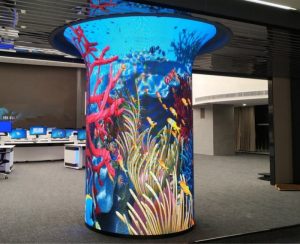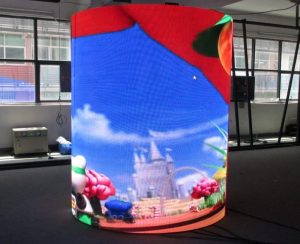Today, LED display is more and more widely used. In order to maximize the display efficiency, application enterprises must have the basic knowledge of LED display maintenance. Whether it is an indoor LED display or an outdoor LED display, heat will be generated during operation, which may cause the temperature of the LED display to rise. But do you know how the display will be affected when it works at high temperature? The following excellent color articles are analyzed together with you.
Generally speaking, the brightness of indoor LED display screen is low, so there is less heat, so it naturally releases heat. However, the outdoor LED display has high brightness and will generate a lot of heat, which needs to be cooled by air conditioner or axial fan. Because the LED display is an electronic product, the temperature rise will affect the light recession of the LED display beads, the productivity of the driving IC, the service life of the LED display, etc.
1. The LED display screen is open and effective: if the working temperature of the LED display screen exceeds the load-bearing temperature of the chip, the luminous efficiency of the LED display screen will be rapidly reduced, there will be obvious light recession, and damage may occur. The LED display screen is packaged with transparent epoxy resin. If the bonding temperature exceeds the solid phase transition temperature (usually 125 ℃), the packaging material will be transformed into rubber, and the coefficient of thermal expansion will rise sharply, resulting in the opening and failure of the LED display screen.
Too high temperature will affect the light recession of LED screen, and the life of LED display screen will suffer from light recession. In other words, if the time is long, the brightness will gradually decrease until it is turned off. Generally, the life of LED display screen is defined as the attenuation of light speed for 30 hours. High temperature is the main reason for the decline of LED display light and shortening the service life of LED display. Different brands of LED displays lead to the decline of light. Generally speaking, LED display manufacturers provide the decline curve of standard light. The light speed attenuation of LED display caused by high temperature is unrecoverable. LED display has no light speed before unrecoverable light attenuation (called the “initial light speed” of LED display).
2. Temperature rise will reduce the luminous efficiency of LED screen. With the increase of temperature, the concentration of electrons and holes increases, the band gap decreases and the electron mobility decreases. As the temperature increases, the radiative recombination rate of electrons and holes in the potential well decreases, resulting in non radiative recombination (heat generation), which reduces the internal quantum efficiency of LED display screen. When the temperature increases, the blue light peak of the chip shifts to the long wave direction, resulting in the inconsistency between the emission wavelength of the chip and the excitation wavelength of the phosphor, and the light extraction efficiency outside the white LED display screen decreases. With the increase of temperature, the quantum efficiency of phosphor decreases, the luminosity decreases, and the external illumination extraction efficiency of LED display decreases. The performance of silicon is greatly affected by ambient temperature. With the increase of temperature, the thermal stress in silicon increases, and the refractive index of silicon decreases, which affects the light efficiency of LED display screen.
What is the effect of high temperature for the operation of LED display




